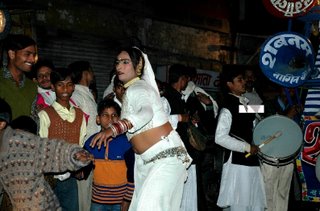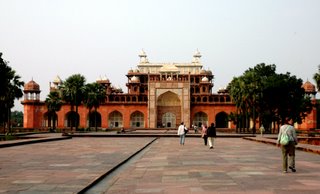





Taj tere liye ek mazhar-e-ulfat hi sahi
tujhko is waadi-e-rangeen se aqeedat hi sahi
Mere mehboob kahin aur mila kar mujhse
bazm-e-shahi mein gareebon ka guzar kya maane?
Sabt jis raah pe ho satavat-e-shaahi ke nishan
us pe ulfat bhari roohon ka safar kya maane?
Mere mehboob pas-e-parda-e-tash heer-e-wafa
toone satavat ke nishanon ko to dekha hota
Murda shahon ke maqabir se behalne waali
apne taarek makanon ko to dekha hota
An-ginat logon ne duniya mein mohabbat ki hain
kaun kehta hai ke sadiq na the jazbe unke
Lekin unke liye tash heer ka samaan nahin
kyonki woh log bhi apni hi tarah muflis the
Yeh imarat-o-maqabir yeh fasiile yeh hisar
mutal-kul-hukm shahenshahon ki azmat ke sutoon
Daaman-e-dehar pe us rang ki gulkari hai
jisme shaamil hai tere aur mere ajdad ka khoon
Mere mehboob! unhe bhi to mohabbat hogi
jinki sannai ne baqshi hai ise shakl-e-jamiil
Unke pyaron ke maqabir rahe be-naam-o-namood
aaj tak un pe jalai na kisi ne qandiil
Yeh chamanzaar, yeh Jamna ka kinara, yeh mahal
yeh munakkash dar-o-deewar, yeh mehraab, yeh taaq
Ek shahenshah ne daulat ka sahara lekar
hum gareebon ke mohabbat ka udaya hai mazak
Mere mehboob kahin aur mila kar mujhse.
------------------------------------------
Even if the Taj for you is a symbol of great love
even though you prefer its pretty colorful setting
My dear, meet me somewhere else.
what truck can the poor have with kingly courts?
The paths on which are seared the grandest Royal Arms
how can love-filled hearts journey on them?
My dear, behind the veil of this advertisement of love
had you seen the trappings of royal power and wealth
Instead of being beguiled by the tombs of dead kings
had you seen our dark homes
Uncounted peoples in this world have loved
who says their love was not true
But they did not have the means for advertising love
they were poor like us
This mausoleum, these decorations, these fort parapets
that the arrogance of kings considers symbols of Greatness
On the face of the world this is a decoration of floral vines
that has flowing in it your ancestors' blood, and mine
My dear! they must have had loves too
those whose art granted this monument its acclaimed form
But those loves' tombs are unnamed, untraced
no one has ever lit on them even a candle
This garden, this Jamna riverbank, this palace
these picturesque walls and doors, these pulpits, these arabesques
A king of kings aided by all his wealth
has mocked the love of us poor
My dear, meet me somewhere else.
-- Abdul Hayee 'Sahir' Ludhianvi.







































